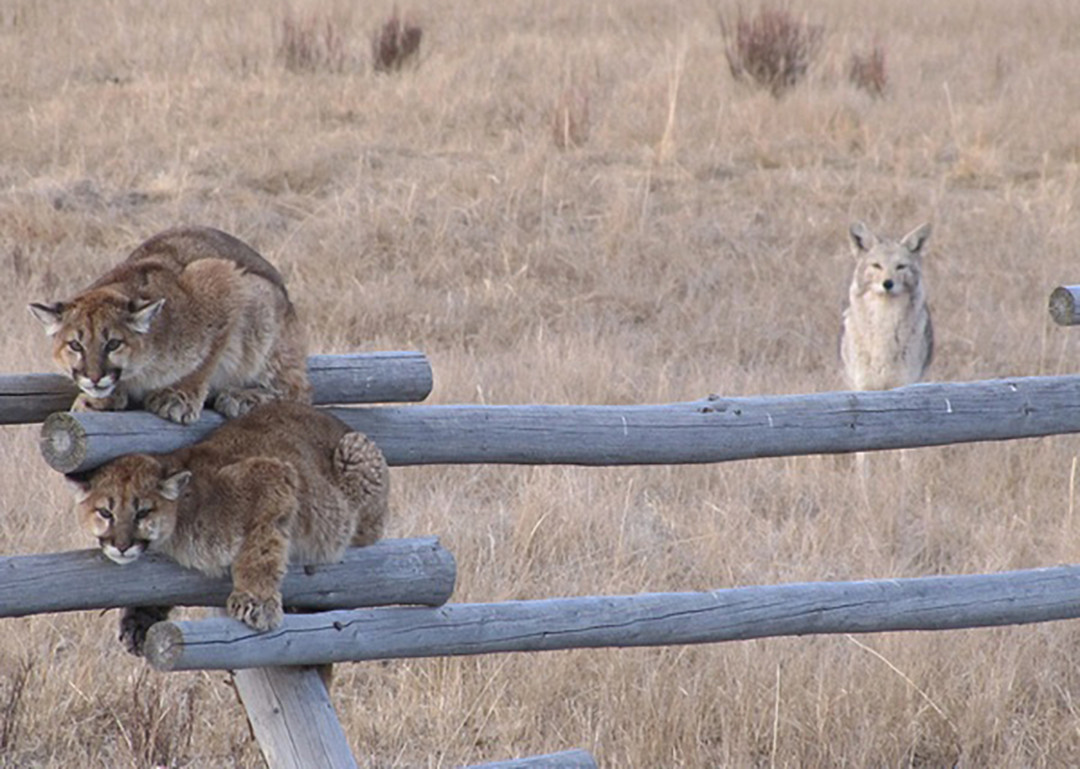Above Photo: Pumas and coyotes are two of the main species targeted by Wildlife Services by USFWS (CC BY 4.0)
By Chris Clarke
Aside from the Internal Revenue Service, it would be hard to think of a Federal agency more sharply unpopular with a large group of people than the U.S. Department of Agriculture’s Wildlife Services. Named Animal Damage Control until 1997, Wildlife Services — not to be confused with the U.S. Fish and Wildlife Service — is the main federal agency tasked with killing wild animals considered to pose problems for human society.
Some divisions of Wildlife Services are hard to argue with, as for example its program to keep large birds away from airport runways. But the core of Wildlife Services’ mission, the program that’s attracted environmentalist ire, is its multi-million dollar program to kill native wildlife across the Western United States at the behest of the ranching and agricultural industries.
And in California, that program is receiving some blowback, as a group of environmental organizations is now formally asking Humboldt and Mendocino counties to join Sonoma and Marin counties to their south in cutting off contracts with the federal agency.
The groups are asking the counties’ Boards of Supervisors to commit any future agreements with Wildlife Services to a full environmental review process under California state law.
Wildlife Services achieved intense notoriety in 2012 when contract employee Jamie Olsen posted a number of photos to his Facebook page which apparently showed him torturing a trapped coyote by setting his dogs on them. (I wrote about that episode here, http://tinyurl.com/ojlptfl. Strong language advisory applies.) A few months later, Wildlife Services trapper Russell Files was accused of using leg hold traps to capture a dog belonging to his neighbor in Arizona.
According to a 2013 investigative reporting series by the Sacramento Bee’s Tom Knudsen, Wildlife Services — one of the most secretive of federal agencies not involved in national security matters — has killed more than a million coyotes alone since 2000, and at least 50,000 animals that were not the intended targets of the traps the agency staff set out. Wildlife Services kills tens of thousands of native animals in California each year, using steel-jaw traps, wire snares, and body-crushing traps. Target animals generally include coyotes, bears, foxes, and mountain lions, but the traps injure and kill many non-target animals, including household pets and even people.
“California taxpayers may be shocked to know their dollars are funding a rogue agency that recklessly kills predators, endangered animals, and pets,” said Stephen Wells, executive director of the Animal Legal Defense Fund, one of the groups signing the letters to Mendocino and Humboldt county officials. “We urge Mendocino and Humboldt to follow the example of counties that use more humane and more effective methods of predator control.”
“Despite growing public outcry, calls for reform by members of Congress and an ongoing investigation by the Agriculture Department’s inspector general, Wildlife Services poisoned, strangled, and shot more than two million native animals last year, an increase of almost 30 percent over the year before,” said Tim Ream of the Center for Biological Diversity, another signer. “Taxpayers in Mendocino and Humboldt should follow the lead of Sonoma and Marin and stop the slaughter.”
Since Marin County ended its agreement with Wildlife Services 14 years ago and embarked on a predator control program emphasizing non-lethal methods, say the groups, livestock losses to coyotes are down 62 percent, and the county saves two-thirds what it once paid Wildlife Services each year.
“Marin County’s Livestock and Wildlife Protection Program demonstrates that killing wildlife is not necessary to reduce conflicts,” said co-signer Camilla Fox of Project Coyote, who helped develop Marin’s nonlethal program. “It has become a national model based on coexistence, community involvement and a recognition that coyotes and other predators are vital to healthy ecosystems.”
Download the article here.
Chris Clarke is a natural history writer and environmental journalist currently at work on a book about the Joshua tree. He lives in Joshua Tree.

